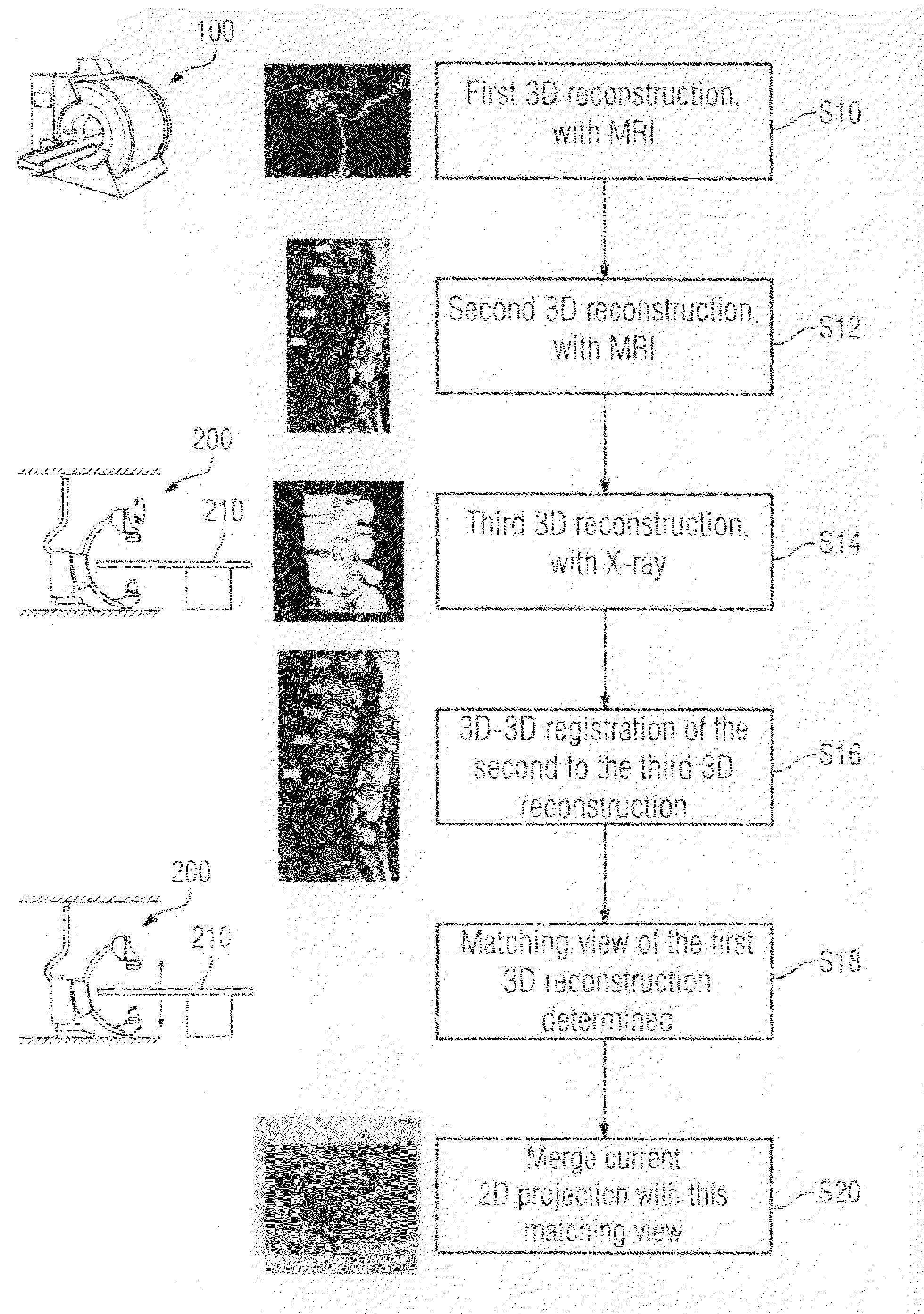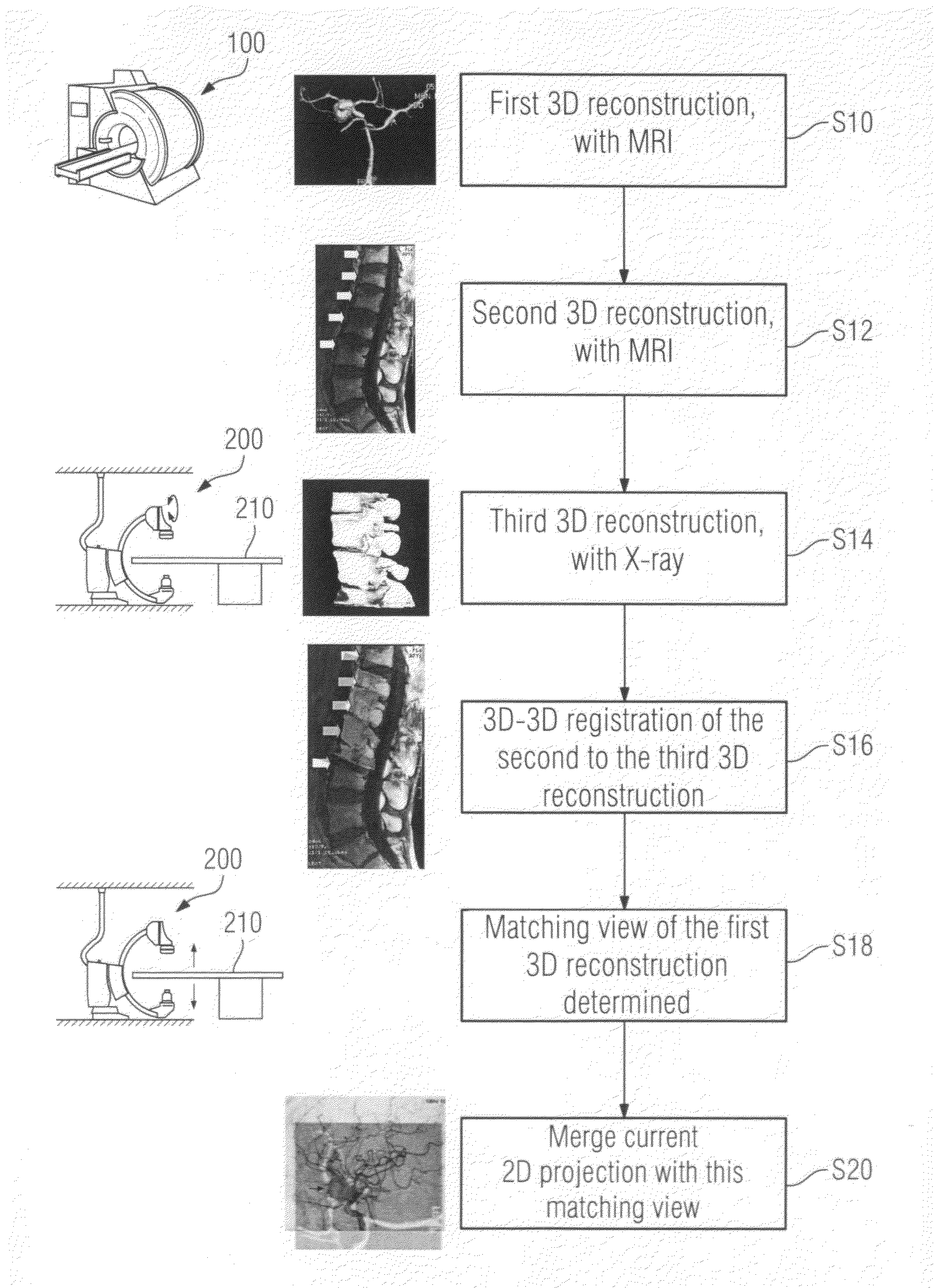Method for image registration processes and X-ray angiography system
a technology of image registration and x-ray angiography, applied in the field of image registration processes and x-ray angiography systems, can solve the problems of insufficient information, difficult to recognize on x-ray images, and insufficient patient data, and achieve the effect of expanding the possibilities for patient data
- Summary
- Abstract
- Description
- Claims
- Application Information
AI Technical Summary
Benefits of technology
Problems solved by technology
Method used
Image
Examples
Embodiment Construction
[0032]In a patient's body there is an area of interest to the treating doctor which in the present case shall be located in a soft part. For example, the doctor is interested in the left atrium of the heart in order to prepare an atrial ablation. An MRI scanner 100 is optimally suited for visualizing such soft parts. In step S10 of the method according to the invention, a sequence of 2D slices of the area of interest is accordingly acquired preoperatively, the image acquisition parameters being optimally selected for imaging the area of interest and there being obtained in known manner from the sequence of 2D slices a 3D reconstruction which, in the present case, constitutes a first 3D image data set. Directly thereafter, with the patient's position in the MRI scanner 100 remaining unchanged, a sequence of 2D slices of vertebral bodies is acquired, this time the image acquisition parameters creating optimum conditions for good visualization of vertebral bodies, and there being gener...
PUM
 Login to View More
Login to View More Abstract
Description
Claims
Application Information
 Login to View More
Login to View More - R&D
- Intellectual Property
- Life Sciences
- Materials
- Tech Scout
- Unparalleled Data Quality
- Higher Quality Content
- 60% Fewer Hallucinations
Browse by: Latest US Patents, China's latest patents, Technical Efficacy Thesaurus, Application Domain, Technology Topic, Popular Technical Reports.
© 2025 PatSnap. All rights reserved.Legal|Privacy policy|Modern Slavery Act Transparency Statement|Sitemap|About US| Contact US: help@patsnap.com


